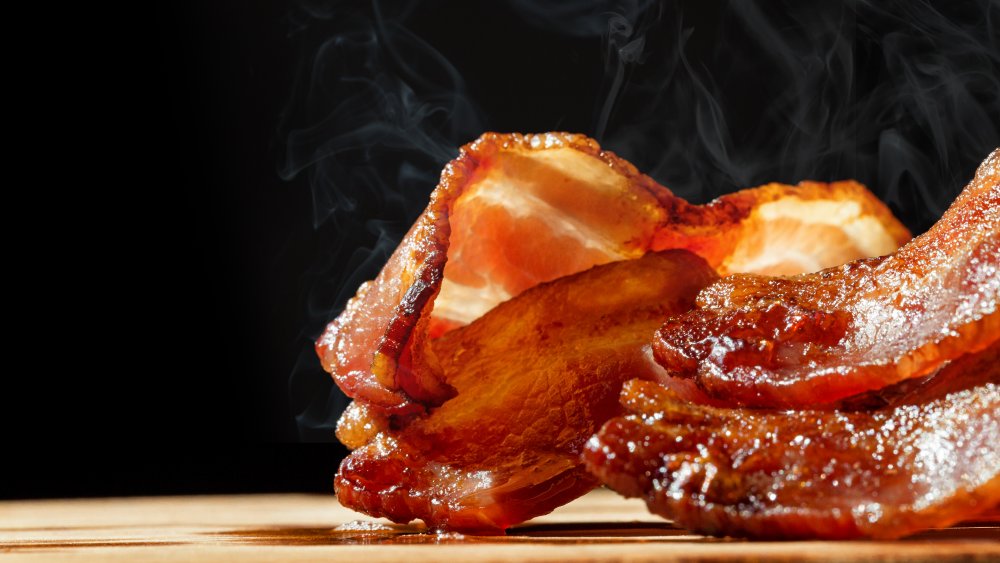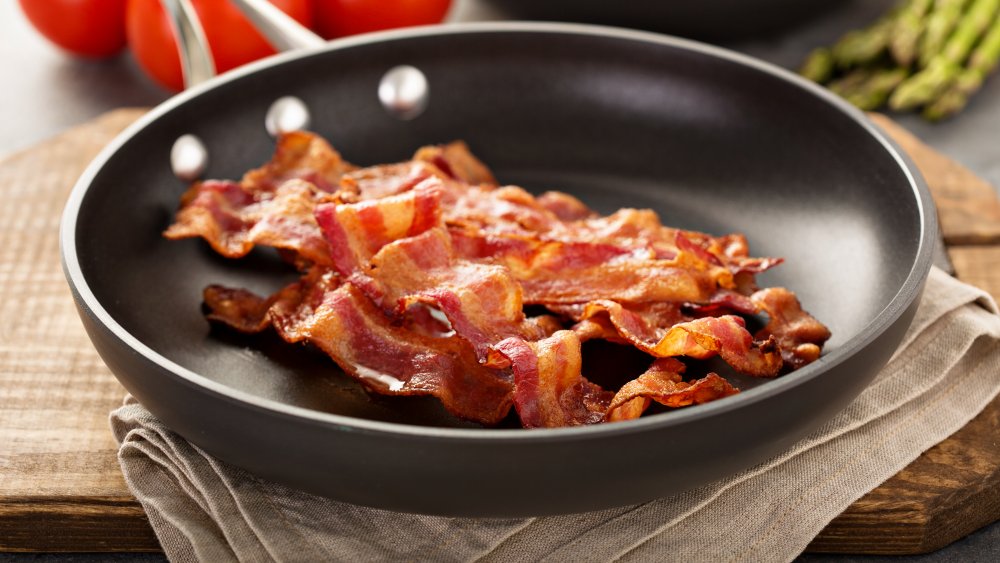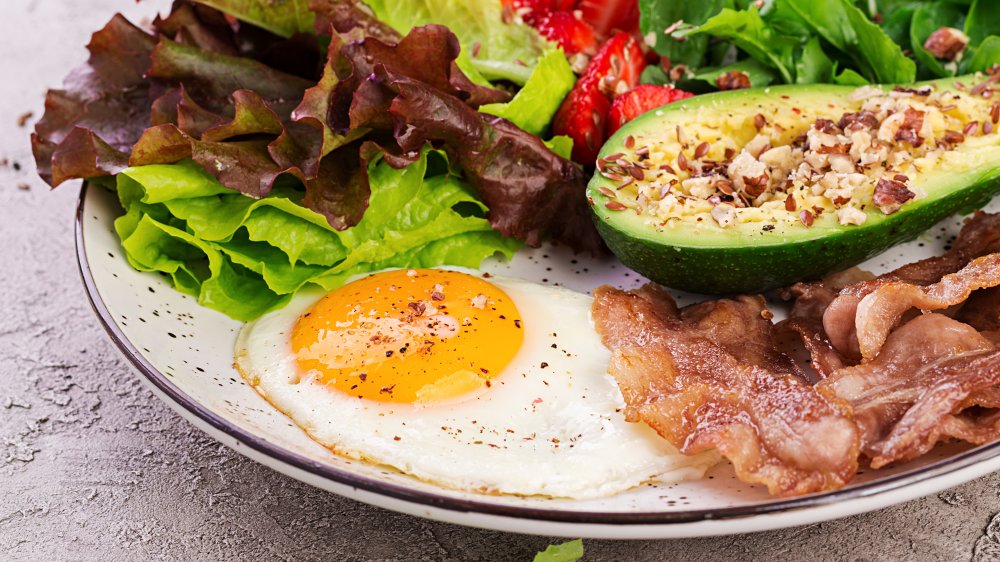This Is The Healthiest Way To Cook Bacon
Just the word 'bacon' heightens the senses. Add in that hard-to-resist smell that permeates every corner of the house when you cook it, and your mouth starts watering. According to Statista, 18.14 million Americans used five pounds or more of bacon in 2019. That's a lot of pork, but not surprising. Bacon's salty, with maple and hickory flavors that couple with a crunchy texture to make this meat a super star, by itself, or in any recipe. It's truly the unicorn of meats that can even make a die-hard vegetarian think twice.
Even in our health-conscious society, bacon is very popular, with 70 percent of Americans enjoying it as a breakfast food. But it isn't just for breakfast. Whether you enjoy bacon crumbled over a wedge salad, chopped up and blended with chocolate, piled high on top of a sandwich, or if you are a purist and eat it straight out of the frying pan, bacon is meant to be a flavorful, and satiating experience for your taste buds (via The Spruce Eats).
Yes, bacon is delish. But it's not always the healthiest choice. Just three slices of bacon contain 161 calories, 12 grams of fat, and 581 milligrams of sodium (per Very Well Fit). So how do you cook your bacon so it's as healthy as possible, yet still crunchy, and yummy every time?
Healthy ways to cook bacon
There are a couple of cooking methods to ensure your bacon isn't swimming in a pool of fat as it cooks. One splatter-free method that Martha Stewart swears by is cooking the bacon on parchment paper in the oven. Stewart recommends heating the oven to 400 degrees. Next, place a baking sheet lined with parchment paper and space bacon evenly on top of the paper (don't let the pieces overlap). Slide the yumminess-to-be into the oven.
If you want crispier bacon, Stewart recommends placing a wire rack on top of the parchment paper-lined baking sheet, and positioning the bacon on the rack, so the grease drips away from the slices as they cook. Cooking time ranges from 15 to 18 minutes. Before eating, blot the bacon with a paper towel to soak up excess grease. This method is tried and true, and results in crispy, crunchy bacon that will keep everyone happy, but healthy(ish), too.
Bacon on the grill
Looking for an outdoor, healthy bacon-prep idea? Nine suggests barbecuing your bacon so the fat drips away. Using the grill to make your bacon can definitely help eliminate excessive grease, while infusing the meat with a smoky flavor that is difficult to achieve anywhere else but the grill. Grilling bacon also helps keep it flat so you are not constantly using your spatula to stop it from curling (via Chantelaine).
Like with steaks, it is recommended you let your bacon sit at room temperature for 10 minutes before you throw it on to the barbecue. You want to keep your bacon strips a couple of inches apart while they cook. Don't put too many strips on the grill at once, or with all that fat dripping into the heat, your bacon might catch on fire.
Grilling bacon requires constant monitoring, and you will want to flip it once the bottom side looks crisp. Preparing bacon on the grill takes about 5 to 7 minutes. And remember, the quality of the bacon will also influence how well it turns out. While it is recommended you go for thicker slices if you are grilling, you can keep it healthy by buying thinner slices, and being vigilant, so you know when it is crispy enough to turn.
Microwaving bacon
In a hurry, but still trying to be healthy? Try the microwave. Start with a microwave safe dish, lined with a couple of paper towels to soak up the grease (via Food Network). The dish you use needs to be big enough for three to four strips of bacon to fit on it, and there should be a little bit of room between each slice. The goal is to cook the bacon through, which should take somewhere between 2 and 4 minutes, depending on the power of your microwave. Once it is cooked through, take the bacon out and allow it to rest for a minute so the end product is crunchy and crumbly. Blot away any excess grease, and you are ready to enjoy. Microwaved bacon is perfect to use on sandwiches and in salads.
No matter how you prepare your bacon, it's recommended that you pay close attention to the cut of bacon you purchase. Stay away from the slices that are over-marbled with fat, and instead look for leaner, thinner cuts of this savory meat.



